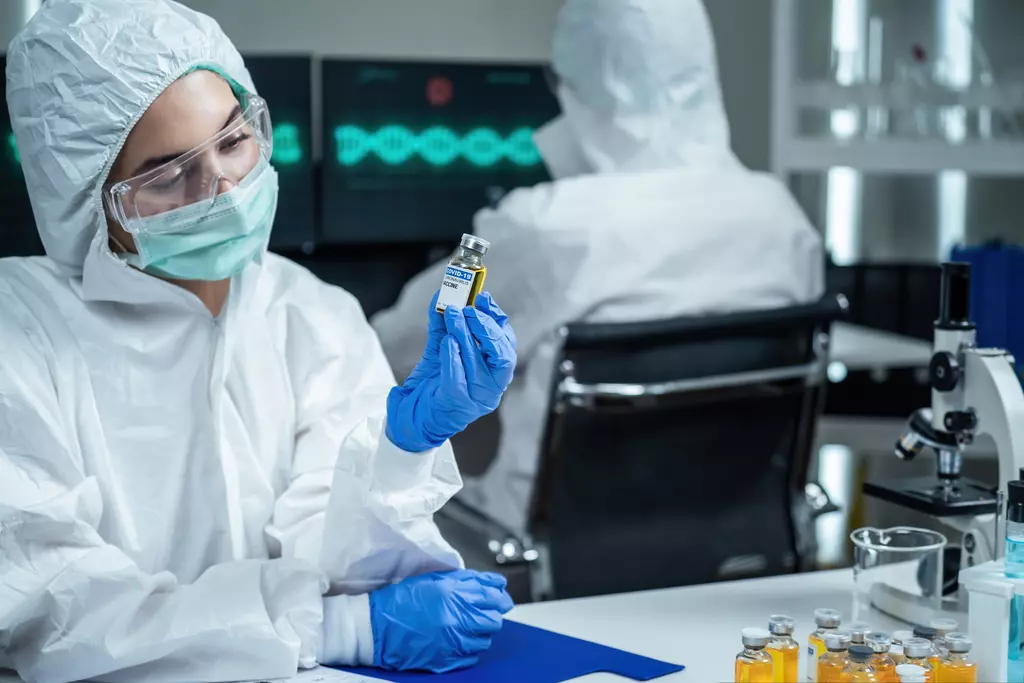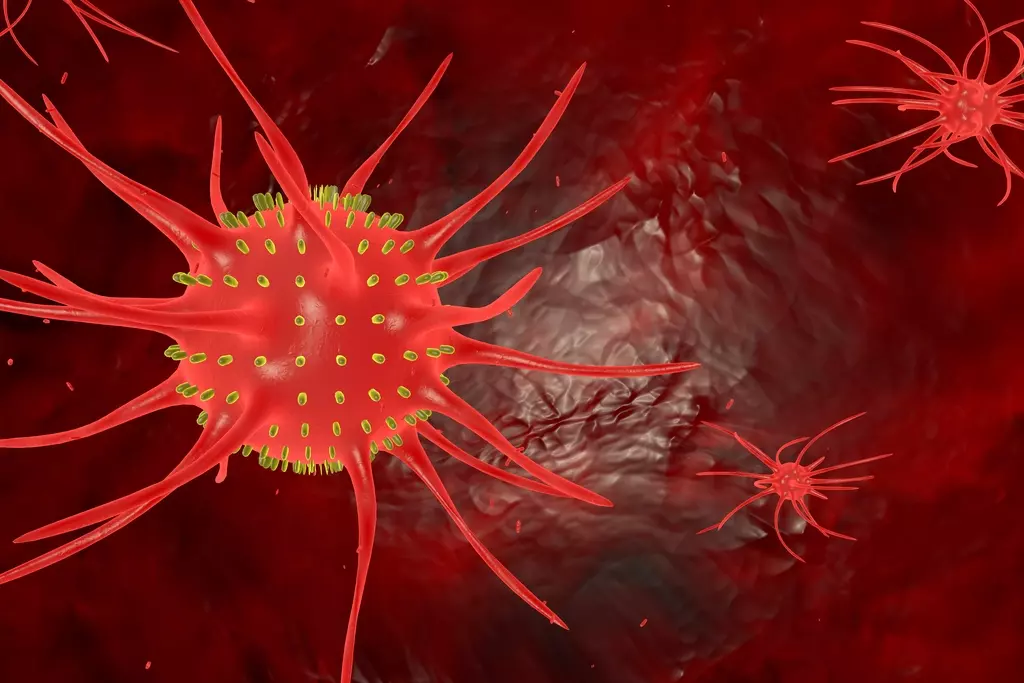Vaccines are a simple and fast way to prevent a lot of diseases. We know there are many myths around them, so we want to put your mind at ease and provide you with the facts you need to make informed decisions about your health.
What Are Vaccines?
Vaccines are a critical tool in modern medicine designed to protect us from various diseases. They work by stimulating our immune system to produce an immune response without causing the disease itself. This response prepares our body to fight off the actual disease if we ever encounter it.
What Are Vaccines Made Of and How Are Vaccines Made?
Vaccines are typically made from weakened or inactivated forms of the disease-causing microorganisms (bacteria or viruses) or their components. These components are carefully selected to trigger an immune response without causing illness. The manufacturing process involves extensive testing and quality control to ensure safety and efficacy.
Are Vaccines Live Viruses?
No, most vaccines do not contain live viruses. The majority of vaccines use inactivated or weakened forms of the microorganism to stimulate immunity without causing illness. This is a crucial distinction as it ensures the safety of the vaccine recipient.
Examples of Live Vaccines
- Measles, Mumps, and Rubella (MMR) Vaccine:
The MMR vaccine combines three live attenuated viruses—measles, mumps, and rubella. It provides immunity against these highly contagious diseases and is typically administered in two doses.
- Oral Polio Vaccine (OPV):
OPV contains weakened polioviruses and is administered orally. It has played a vital role in the global effort to eradicate polio, as it provides immunity to all three types of poliovirus.
- Varicella (Chickenpox) Vaccine:
This vaccine contains a live attenuated varicella-zoster virus and prevents chickenpox, a common childhood disease known for its itchy rash. It’s administered in two doses for optimal protection.
- Yellow Fever Vaccine:
Yellow fever vaccine contains a live attenuated virus that provides immunity against the yellow fever virus, which is transmitted by mosquitoes in certain regions. It’s essential for travelers to endemic areas.
- Rotavirus Vaccine:
Rotavirus vaccines are oral vaccines containing weakened rotaviruses. They protect infants and young children from severe diarrhea caused by rotavirus infections.
- Typhoid Fever Vaccine (Oral Ty21a):
The Ty21a vaccine contains live attenuated Salmonella Typhi bacteria, providing protection against typhoid fever. It’s taken orally in capsule form.
- Bacillus Calmette-Guérin (BCG) Vaccine:
BCG is a live attenuated strain of Mycobacterium bovis. It’s primarily used to prevent tuberculosis (TB) and is often administered in countries with a higher TB prevalence.
- Shingles (Herpes Zoster) Vaccine:
The shingles vaccine contains a live attenuated varicella-zoster virus and is recommended for adults over a certain age to reduce the risk of shingles, a painful condition caused by the reactivation of the chickenpox virus.
What Do Vaccines Do?
Vaccines prepare your immune system to recognize and fight specific diseases. When you receive a vaccine, your body learns to recognize the disease-causing microorganism and create antibodies to fight it. If you later encounter the actual disease, your immune system can respond rapidly and effectively, often preventing you from getting sick or reducing the severity of the illness.
Vaccine Myths
Vaccine Myth 1: Vaccines cause autism.
Fact: One of the most pervasive vaccine myths is the false claim that vaccines, particularly the MMR vaccine, can cause autism. This misconception gained traction due to a controversial and now-discredited study published in 1998. Subsequent research involving millions of children has found no link between vaccines and autism. The scientific consensus overwhelmingly supports the safety of vaccines.
Vaccine Myth 2: Vaccines contain harmful chemicals.
Fact: Some vaccine ingredients may sound unfamiliar and concerning to the layperson, but they are used in minute quantities and have been extensively studied for safety. For example, thimerosal, a preservative once used in vaccines, is no longer present in most childhood vaccines. Other components like aluminum adjuvants are used to enhance vaccine effectiveness. These ingredients are well below the safety limits established by regulatory agencies.
Vaccine Myth 3: Vaccines are not necessary because diseases are rare.
Fact: The success of vaccines in reducing the incidence of certain diseases has led some to believe that these diseases are no longer a threat. However, vaccines have played a crucial role in achieving this rarity. When vaccination rates decline, diseases can make a comeback. For example, measles was declared eliminated in the United States in 2000, but outbreaks have occurred due to declining vaccination rates.
Vaccine Myth 4: Natural immunity is better than vaccine-induced immunity.
Fact: While recovering from a disease can provide natural immunity, it comes at a significant cost, as the disease itself can be severe, with potential complications or even death. Vaccines offer a safer way to develop immunity without experiencing the full-blown illness. They stimulate the immune system to create the same antibodies and memory cells that would develop after natural infection but without the associated risks.
Vaccine Myth 5: Vaccine schedules overload a child’s immune system.
Fact: Children’s immune systems are equipped to handle the challenges posed by vaccines. In fact, they are exposed to numerous antigens daily, from the environment and the food they consume. Vaccines introduce a few additional antigens, which the immune system handles without any difficulty. The vaccine schedule is carefully designed to protect children when they are most vulnerable to certain diseases.
Myth 6: Vaccines can give you the disease they are meant to prevent.
Fact: Vaccines do not contain the full, active pathogens that cause diseases. Instead, they contain weakened or inactivated versions, pieces of the pathogen, or synthetic components that trigger an immune response. These components cannot replicate in the body to cause the disease. The mild symptoms that some people experience after vaccination (like a low-grade fever) are a sign that the immune system is responding and building immunity.
Vaccine Myth 7: Vaccines are a ploy for profit by pharmaceutical companies.
Fact: While vaccine development is a commercial endeavor, vaccines are subject to rigorous testing and regulation by health authorities to ensure their safety and efficacy. Many vaccines are not highly profitable, and some are even produced by non-profit organizations. The long-term benefits of preventing diseases and saving lives far outweigh the financial considerations.
Examples of Common Vaccines
Influenza vaccine: Protects against seasonal flu, reducing the risk of severe illness and hospitalization.
Hepatitis B vaccine: Prevents a viral infection that can lead to chronic liver disease.
HPV vaccine: Guards against human papillomavirus, reducing the risk of cervical and other cancers.
COVID-19 vaccine: Provides protection against the novel coronavirus, preventing severe illness and death.
Immunization Meaning
Immunization is the process of making a person immune or resistant to a specific disease by administering a vaccine. It’s a crucial aspect of public health that helps prevent the spread of contagious diseases.
Immune System Facts
The immune system is a remarkable and complex defense network that plays a crucial role in protecting our bodies from infections, diseases, and foreign invaders. Here are some essential facts about the immune system:
Multilayered Defense: The immune system is not a single entity but a highly intricate system comprising various components that work together to defend the body. It includes physical barriers like the skin, as well as cellular and molecular mechanisms.
White Blood Cells: White blood cells, or leukocytes, are the foot soldiers of the immune system. They come in different types, such as neutrophils, lymphocytes, monocytes, and macrophages, each with specific functions in identifying and combating pathogens.
Antibodies: Antibodies, also known as immunoglobulins, are proteins produced by B cells in response to foreign invaders. These antibodies recognize and neutralize specific pathogens, marking them for destruction by other immune cells.
Memory Cells: The immune system has memory cells called memory B cells and memory T cells. These cells “remember” previous encounters with pathogens. When the same pathogen is encountered again, memory cells enable a quicker and more effective immune response, often preventing illness.
Adaptive Immunity: Adaptive immunity refers to the ability of the immune system to adapt and improve its response to specific pathogens over time. Vaccines leverage adaptive immunity by training the immune system to recognize and respond to particular diseases.
Innate Immunity: Innate immunity is the immediate, non-specific defense mechanism against pathogens. It includes physical barriers like the skin, as well as processes like inflammation and fever that help limit the spread of infections.
Immune Responses: The immune system can produce various responses, including inflammation, fever, and the production of immune cells and antibodies. These responses are tailored to the type of threat the body faces.
Lymphatic System: The immune system relies on the lymphatic system, a network of tissues and vessels, to transport immune cells, drain fluids, and filter out harmful substances. Lymph nodes are essential components of the lymphatic system, where immune cells interact and mount responses to pathogens.
Autoimmune Diseases: In some cases, the immune system can malfunction and attack the body’s healthy tissues, leading to autoimmune diseases like rheumatoid arthritis and lupus. These conditions require specialized medical treatment.
Nutrition and Lifestyle: Proper nutrition, regular exercise, adequate sleep, and stress management play critical roles in maintaining a healthy immune system. A well-balanced diet rich in vitamins and minerals, especially vitamin C, vitamin D, and zinc, supports immune function.
Aging and Immunity: The immune system undergoes changes as we age, which can lead to reduced immune function. Vaccinations become increasingly important for older adults to maintain immunity against certain diseases.
Herd Immunity: Herd immunity occurs when a sufficiently large portion of a population becomes immune to a disease, either through vaccination or previous infections. This makes it harder for the disease to spread, protecting those who cannot be vaccinated, such as individuals with certain medical conditions or weakened immune systems.
What Are Vaccine-Preventable Diseases?
Vaccine-preventable diseases are illnesses that can be avoided through vaccination. These diseases, if left unchecked, can lead to severe complications, hospitalization, or even death.
Examples of Vaccine-Preventable Diseases
Measles: Can cause severe respiratory and neurological complications.
Polio: May result in paralysis or even death.
Tetanus: Leads to muscle stiffness and painful spasms.
Whooping cough (Pertussis): Causes severe coughing fits, especially dangerous for infants.
Vaccination vs. Immunization
Vaccination refers to the process of receiving a vaccine to stimulate the immune system, while immunization is the result of vaccination—becoming immune to a specific disease. Vaccination is the key step in achieving immunization.
Inoculation vs. Vaccination
Historically, inoculation referred to the practice of introducing a small amount of a disease (e.g., smallpox) to induce immunity. However, this method was risky and is now obsolete. Vaccination, on the other hand, offers a safer and more effective means of achieving immunity.
Vaccines have completely transformed our lives. They have significantly reduced mortality and, in some cases, eradicated once-deadly diseases. Thanks to them, we have reduced child mortality rates and enjoy a higher life expectancy.
At DFW Family Clinic, we are dedicated to preventative medicine and encourage you to schedule your vaccination appointment today. Protect yourself and your community by embracing the power of vaccines and dispelling the myths that surround them. Your health and the health of future generations depend on it. By taking proactive steps to immunize ourselves and our loved ones, we can ensure a healthier and safer future for all.













